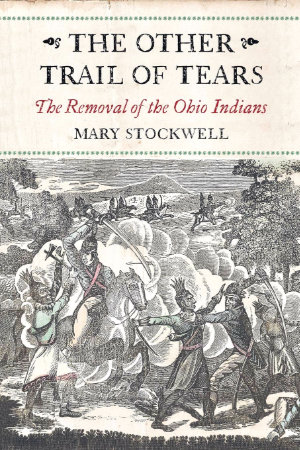 I read this book by accident and belatedly. The accident comes from a spontaneous purchase. The belated reading comes from me not realizing how good it is. I picked the book up back in June of 2018 when I went to hear Mary Stockwell talk on her just-published Unlikely General about my childhood hero, Anthony Wayne. I knew nothing about Stockwell or any other books she had written but bought a copy of The Other Trail of Tears because it sounded kind of interesting and, perhaps more importantly, I was there. Unlikely General worked its way through the stack in a fairly timely manner; It was read and reviewed by November 2018. I let other books move ahead of this one and even loaned it, along with Unlikely General, to a friend to read. When I eventually did start reading The Other Trail of Tears, I quickly put it aside to accommodate two new road-related books. The second attempt went much better and I quickly regretted not diving in sooner. As is too often the case, my preconceptions were wrong. This is another book that was much more than I expected.
I read this book by accident and belatedly. The accident comes from a spontaneous purchase. The belated reading comes from me not realizing how good it is. I picked the book up back in June of 2018 when I went to hear Mary Stockwell talk on her just-published Unlikely General about my childhood hero, Anthony Wayne. I knew nothing about Stockwell or any other books she had written but bought a copy of The Other Trail of Tears because it sounded kind of interesting and, perhaps more importantly, I was there. Unlikely General worked its way through the stack in a fairly timely manner; It was read and reviewed by November 2018. I let other books move ahead of this one and even loaned it, along with Unlikely General, to a friend to read. When I eventually did start reading The Other Trail of Tears, I quickly put it aside to accommodate two new road-related books. The second attempt went much better and I quickly regretted not diving in sooner. As is too often the case, my preconceptions were wrong. This is another book that was much more than I expected.
Like most people, I am fairly familiar with the forced removal of Native Americans from the southern United States that caused inconceivable suffering and thousands of deaths during the trek west known as The Trail of Tears. Those were the most horrific of the relocations resulting from the Indian Removal Act of 1830 but there were others.
Several reservations once existed in northern Ohio occupied by Shawnee, Wyandot, Seneca, and others. As an Ohioan, I was somewhat aware of these reservations and even knew a little bit about the forced removal of these people. I assumed that Stockwell’s book was filled with details of that removal. Perhaps that assumption and the accompanying assumption that those details would be terribly depressing contributed to my delay in actually reading the book.
My assumptions were not wrong but neither were they complete. The stories of the actual treks to the west are properly told and they are indeed depressing. But they do not fill the book. More pages are used telling of what preceded the removals than on the actual journeys. Stockwell’s coverage of the treaties and trades that resulted in the removal and the people and policies involved is rather detailed and seems complete. There is a lot of history here that I was quite ignorant of.
Though extremely educational, the pre-removal history is also somewhat depressing, and the whole book can fuel that sense of guilt we descendants of European Americans often feel when contemplating the last few centuries of Native American history.
Stockwell doesn’t stoke the guilt or overly stress the sadder aspects of the treks. Although she doesn’t completely hide her sense that Native Americans got a really raw deal, for the most part she sticks to accurately reporting the facts about an undeniably sad period in U.S. history.
The Other Trail of Tears: The Removal of the Ohio Indians, Mary Stockwell, Westholme Publishing, March 18, 2016, 9 x 6 inches, 300 pages, ISBN 978-1594162589
Available through Amazon.
